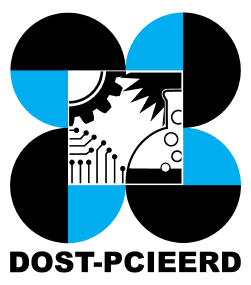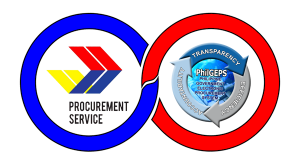
Domain Rating or abbreviated as DR is a key metric in SEO, reflecting a website’s authority based on the quality and quantity of its backlinks. Its significance lies in its direct impact on search rankings; websites with higher DR typically enjoy better visibility and rankings in search engine results. As we explore the nuances of DR, you’ll discover its crucial role in influencing search rankings, algorithms and shaping the competitiveness of your website’s online content. In this article, we will tackle the basics of Domain Rating and strategies to improve your website’s authority in the search engine rankings – specifically in Google.
Understanding Domain Rating (DR)
In understanding the intricacies of Understanding Domain Rating (DR), we begin with its Definition and Concept, recognizing DR as a metric devised to evaluate a website’s authority, predominantly influenced by its backlink profile.
Domain Rating is a comprehensive metric designed to gauge a website’s authority, and it is intricately tied to its backlink profile. The backlink profile encompasses the various links pointing to a website, each carrying its own significance.
Do-follow links, for instance, are influential in passing authority from the linking page to the linked page, contributing positively to the authority of a website’s domain. These links essentially endorse and validate the content, signaling to search engines, such as Google, that the linked page is valuable and credible.
On the other hand, no-follow links, while not passing the same authority, still hold importance in diversifying the backlink profile of a website. They are often used for user-generated content, comments, or sponsored links, and though they may not directly contribute to DR, they add a layer of authenticity and natural link diversity.
What are Backlinks?
Backlinks, also known as inbound links or incoming links, are hyperlinks that point from one webpage to another. They play a fundamental role in search engine optimization (SEO) by contributing to a website’s authority and credibility. When a website links to another, it is essentially vouching for the linked content’s quality and relevance.
Do-follow links, for instance, are influential in passing authority from the linking page to the linked page, contributing positively to the authority of a website’s domain. These links essentially endorse and validate the content, signaling to search engines, such as Google, that the linked page is valuable and credible.
On the other hand, no-follow links, while not passing the same authority, still hold importance in diversifying the backlink profile of a website. They are often used for user-generated content, comments, or sponsored links, and though they may not directly contribute to DR, they add a layer of authenticity and natural link diversity.
How to Measure a Website’s Domain Rating (DR)?
The measurement of a website’s Domain Rating is important to comprehend. This score is calculated based on the quality and quantity of backlinks pointing to a domain which emphasize the significance of high-quality backlinks in establishing a robust DR. A website’s Domain Rating can be measured through SEO tools such as:
What is a Good or Bad Domain Rating (DR)?
The measurement of Domain Rating is measured on a scale of 0-100:
- 60+ DR is considered excellent
- 59-51 DR is considered good
- 40-50 DR is considered average
- 39-0 DR is considered low
The higher DR the more authority your website has in the eyes of search engines. On the other hand, a lower DR will have a harder time placing in the top 10 blue links in competitive keywords. Which requires extensive backlinking strategies to place on the first page of the search result.
While DR is a significant factor, search engines consider a myriad of other elements such as content relevance, quality, user experience, and overall on-page optimization. Websites with lower DR can still rank well if they excel in these aspects, showcasing that DR is just a piece of the SEO puzzle.
What Factors Affect Domain Rating (DR)?
As mentioned above, backlinks and link building is only a piece of the SEO puzzle, and there are various factors that can result in the increase or decrease of a website’s domain rating. In this section of the article, we will talk about the things that can influence a website’s DR.
Quality and Quantity of Backlinks
The most significant factor is the quality and quantity of backlinks pointing to a domain. High-quality, authoritative backlinks from diverse sources positively impact DR.
Relevance of Backlinks
Backlinks from websites that are thematically relevant to the content of the linked page contribute more to DR. Relevant links signal to search engines that the content is valuable and contextually significant.
Content Quality
High-quality, valuable content attracts more backlinks. Well-researched, informative, and engaging content is more likely to be shared and linked to by other websites.
On-Page SEO Optimization
Proper on-page optimization, including optimized meta tags, headings, and a clear site structure, positively impacts DR. Well-organized and well-optimized content is easier for search engines to crawl and index.
Domain Age and History
As we’ve mentioned above, increasing a website’s domain rating may take a minimum of 6 months that can extend to years. Older domains generally have higher DR. However, it’s important to note that age alone does not guarantee a high DR. The historical reputation of a domain also plays a role.
Technical SEO
Proper implementation of technical SEO elements, including XML sitemaps, robots.txt, and clean URL structures, contributes to better crawling and indexing by search engines.
How to Increase Domain Rating (DR)?
Increasing domain rating requires time and vigorous effort as it may take at least months or even years of work to achieve a higher domain rating.
- Backlinking Strategy
Building a backlinking strategy is the first step in increasing your DR. These backlinking strategies vary from outreaching to niche websites for a backlink, guest posting, pushing out high-quality, relevant content, anchor text strategies, and broken link building.
- Guest Posting
Reach out to reputable websites within your niche to contribute guest posts. Include a link back to your website in the author bio or within the content itself, ensuring it adds value to the reader.
- Anchor Text
What is an anchor text? It is a strategy of placing a hyperlink in a keyword you’re targeting for. Anchor text plays an important role in SEO as search engines use it to understand the context and relevance of the linked page.
- Broken Link Building
Broken link building is a strategic approach to acquiring backlinks by identifying and replacing broken links on external websites with links to your own content.
This process requires finding relevant, authoritative websites within your niche that have broken backlinks, then reaching out to the website owner or manager, then proposing your content to replace their broken backlinks. This strategy is both beneficial for both websites, which fixes their broken content, at the same time, passess their authority to your content or website.
- Low-hanging fruit keywords
Low-hanging fruit keywords are keywords that have low or no competition with high volume traffic (within your niche) that are relatively easy to rank for especially for low DR websites. Low-hanging fruit keywords with high traffic are usually hard or rare to find, but placing for low competition keywords offer accessible opportunities to attract the targeted keyword.
- Create high-quality, relevant content
Creating high-quality, relevant content is the cornerstone of a successful online presence. By deeply understanding your target audience and incorporating strategic keyword research, you can tailor your content to meet user needs and align with search intent.
- Internal Linking Strategy
Internal linking is one of the best ways to improve your domain rating. Internal linking is a strategy that connects different internal web pages in your website through relevance through an anchor text. A well-optimized internal linking strategy not only contributes to improved SEO but also encourages a seamless and enjoyable browsing experience for your audience.
- Technical SEO
Technical SEO and mobile-friendliness are integral components of website optimization, ensuring a positive user experience and improved search engine rankings. Technical SEO involves optimizing the technical aspects of a website to enhance its visibility and crawlability by search engines. This includes optimizing site speed, improving website architecture, implementing proper HTML tags, and addressing issues like duplicate content.
- Mobile-friendliness
Mobile-friendliness focuses on ensuring that a website is easily accessible and functions well on mobile devices. This includes responsive design, mobile-friendly navigation, and optimized content for smaller screens. As mobile usage continues to rise, search engines like Google prioritize mobile-friendly websites in their rankings.
Takeaway
Domain Rating is an essential metric that measures your website’s success online. This metric can also affect factors such as organic traffic, trusts, conversions, and sales. A higher Domain Rating reflects a stronger online presence, indicating to search engines and users alike that your website is authoritative and reliable within its niche.
As Domain Rating is intricately linked to overall online performance, dedicating efforts to boost and maintain a high DR is an investment in the sustained success and growth of your online presence.









